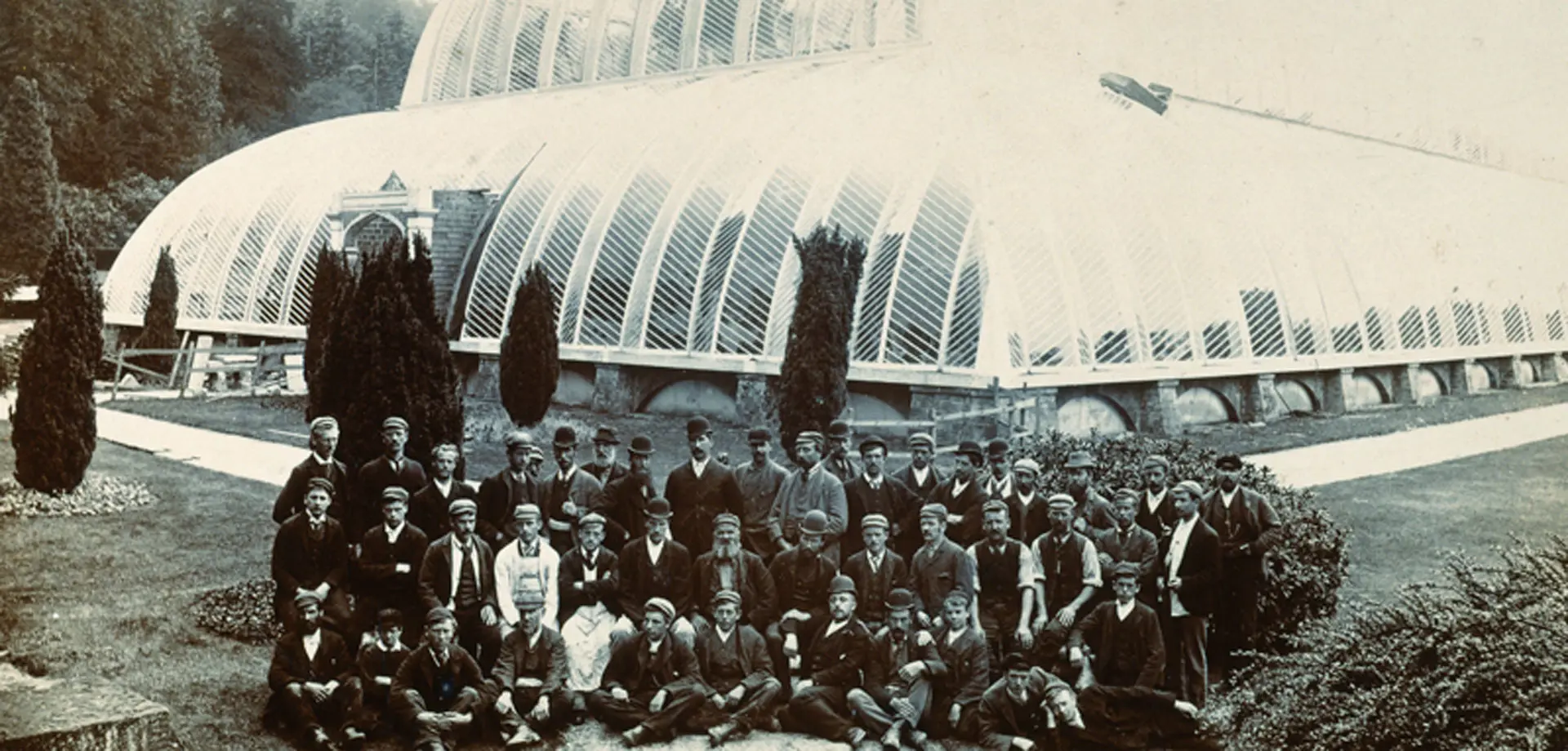The concept was vast. The building was 84m long, 37m wide and 19m high, the largest glass building in England before the erection of Paxton’s subsequent marvel, the Crystal Palace in London in 1851. Inside there was room for two carriages to pass on the main thoroughfare, and stairs, hidden by ascending rocks, led to a gallery from which you could inspect the highest branches of the exotic palms and other trees flourishing there. There were ponds full of aquatic plants, rocks, mosses, ferns and brilliantly coloured flowers in a tropical climate.
To create this climate there were eight underground boilers fuelled by coal which arrived by underground rail wagons. A short length of the tunnel is now open from the Coal Hole entrance. The boilers fed a seven-mile maze of 6-inch hot water pipes. In winter, it took 300 tons of coal to fuel the boilers. The boiler fumes escaped through flues laid along the ground to a chimney up in Stand Wood, well out of sight of the garden.
During and after the First World War (1914-18), there was not enough coal to heat the conservatory and many plants died. Because of the expense of restoring the now semi-derelict building and bearing in mind the huge cost of maintaining and heating it, the Great Conservatory was demolished in 1920, leaving only the supporting walls as a lasting memorial to this extraordinary building.
The Maze was established in 1962 within the walls of the former Great Conservatory by the 11th Duke.
Discover more from the 6th Duke and Paxton's garden
Arboretum and Trout Stream
The Arboretum, started in 1835, was one of Paxton’s greatest contributions to the Chatsworth landscape; a systematic succession of trees in accordance with botanical classification.
The Case
The Case acts as a protective cover for the tender plants grown here. Originally called the Conservative Wall, it was designed by Joseph Paxton in 1838.
Coal Hole and Tunnel
Horse-drawn carts brought coal from the railway station at Rowsley, entered the garden above the stables, and took the track that went under the Cascade and on to the Coal Hole.
Emperor Fountain
Although the Great Fountain, installed by the 1st Duke, was the highest in this country, the 6th Duke put Paxton’s engineering skills into action to create a new record-breaking gravity-fed fountain.
Pinetum
The Pinetum was created between 1830 and 1831, established from eight acres added to the garden from the south park (The Old Park). Here, the 6th Duke and Paxton indulged their passion for collecting on a grand scale.
Rock Garden and Strid
The Rock Garden was built as a reminder of the 6th Duke’s visit to the Alps during the Grand Tour of Europe. Work began in 1842 and the stone was brought from Dobb Edge, north of Stand Wood.
Vinery
Built circa 1834, this is the sole survivor of three glasshouses constructed specifically for orchids by Joseph Paxton. It contained the 6th Duke’s superb collection, gathered from all over the world.
Discover the History of the Early Garden
The house and garden were first constructed by Sir William Cavendish and Bess of Hardwick in 1555. The Elizabethan garden was much smaller than the modern garden is now.
Learn about the Modern Garden
In the last 100 years, many of the historic features of the garden have been restored and numerous important new features have been added.



